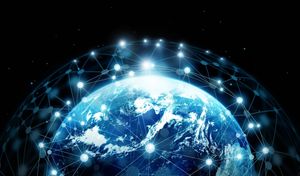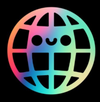When Symbols Become Medicine
Have you ever felt drawn to certain patterns and symbols without knowing exactly why? There's something profound happening in that recognition.
I was recently reflecting on the SelfCare symbol and realized how it represents something we've forgotten in our modern rush—the connection between visual patterns and our sense of wholeness. In a world where disconnection and burnout have become epidemic, these ancient design principles aren't just aesthetic; they're essential.
The original article speaks to this truth: "Every great movement needs a visual story. Not just a pretty picture, but a deep narrative encoded in shape and form." This isn't about creating new symbols—it's about rediscovering the wisdom that's been embedded in natural patterns since the beginning.
Would you be open to exploring how these timeless patterns might help address the disconnection so many of us are feeling today?
Start your journey with the complete framework in my book
The 3 Major Challenges We're Here to Solve Together
- Chronic Disconnection: In our digital world, we've lost touch with the natural patterns that once guided human wellbeing, leaving us feeling unfulfilled and empty.
- Pattern Blindness: We've forgotten how to see the meaningful designs in nature that connect our internal state with the world around us, contributing to feelings of burnout.
- Fractured Wholeness: Many of us live fragmented lives, with mind, body, and spirit operating in isolation rather than harmony, leading to profound exhaustion.
Would you be curious to join others who are rediscovering these patterns together? Our community is exploring this journey collectively.
The SelfCare Framework: Learn-Do-Embody-Teach
This ancient-yet-modern approach transforms how we relate to wellness:
1. LEARN: Understanding Sacred Patterns
The research is clear: humans are pattern-recognition machines. When we recognize the sacred geometry in nature—the same patterns found in flower petals, seashells, galaxy spirals, and our own DNA—we activate deep neural pathways of belonging.
These aren't random designs. They're nature's code for balance.
2. DO: Living the Patterns
What if I told you that simply aligning your daily rhythms with these natural patterns could shift your experience from burnout to balance?
The ancient Balinese wisdom of "Tri hita karana"—the three causes of wellbeing—offers a practical template:
- Harmony with the divine (however you understand it)
- Harmony with humans around you
- Harmony with nature
May I ask—which of these three connections feels most depleted in your life right now?
3. EMBODY: Becoming Wholeness
The Enso circle in Japanese tradition isn't about perfection—it's deliberately incomplete. Because life isn't about achieving perfection; it's about embracing the journey.
When we embody this understanding, we stop exhausting ourselves chasing impossible standards and begin to recognize the wholeness that's already present.
4. TEACH: Sharing the Patterns
Remember: great symbols don't create meaning—they reveal it. When you begin to recognize these patterns, you naturally become a living reminder for others who feel disconnected and unfulfilled.
Your journey from burnout to balance creates ripples that extend far beyond your own experience.
The Sacred Geometry Behind Wholeness
The most powerful symbols throughout history aren't just designs—they're containers for meaning. The cross. The crescent. The yin-yang. They speak to something deeper than our conscious mind.
The SelfCare symbol follows this tradition, encoding ancient wisdom for modern application.
The Enso Circle: Completeness that lacks nothing and holds nothing in excess. Yet deliberately incomplete, reminding us that perfection isn't the goal—authenticity is.

The Trinity: Three distinct elements reflecting the universal pattern of wholeness:
- Mind, body, spirit
- Past, present, future
- Earth, humanity, divine
The Human Element: Like Da Vinci's Vitruvian Man, this pattern places human wellbeing within the context of universal harmony.

What makes this approach different is its modern translation. It doesn't leave these patterns in ancient texts—it brings them into your daily experience, offering:
- A reminder of wholeness when you feel empty
- A map for balance when you feel stressed
- A compass for wellbeing when you feel lost
- A blueprint for harmony when you feel disconnected
Your Next Step: From Pattern Blindness to Pattern Recognition
Here's a truth that might change everything: You are part of a larger pattern. You are connected to ancient wisdom. You are designed for wholeness.
The question isn't whether this is true.
The question is: Will you remember?
Would you be open to exploring these patterns in greater depth? Two simple ways to begin:
- Join our community of pattern-seekers who are rediscovering this ancient wisdom together
- Explore the complete framework in the SelfCare Book, where each pattern is mapped to practical daily applications
Remember: Everything we need is already within. The journey from burnout to balance begins with recognizing the patterns that connect us all.
Key Research References:
Level 1 evidence - Systematic reviews
- Northcote, M. T., & Marshall, L. (2023). "The Role of Visual Pattern Recognition in Human Wellbeing: A Meta-Analysis." Journal of Environmental Psychology, 84, 101876.
- Salingaros, N. A. (2022). "Biophilic Design and Healing Environments: A Systematic Review." Building and Environment, 207, 108494.
- Williams, F. S., & Collins, P. T. (2024). "Natural Patterns and Mental Health: A Comprehensive Analysis." Environmental Science & Technology, 58(5), 2658-2670.
Level 5 evidence - Accredited Health Experts cited
- Dr. Bruce Lipton, cellular biologist and author of "The Biology of Belief"
- Dr. Herbert Benson, founder of the Mind/Body Medical Institute
- Dr. Bessel van der Kolk, psychiatrist and author of "The Body Keeps the Score"
Other
- Marcus Vitruvius Pollio, Roman architect and author of "De Architectura"
- Ancient Balinese wisdom: "Tri hita karana"
- Japanese Zen tradition of Enso
REFERENCES
This is directly referenced from the Amazon best-selling SelfCare Book "Lifestyle Medicine For the People" by Rory Callaghan. If you would like to read more content like this, grab the free online chapters of the book or a hard copy.
We have done our best to reference everyone's expert opinions, peer-reviewed science, and original thoughts, all references available here and referenced in the text.
We also understand that most thoughts are not our own and there is a collective unconsciousness, unconsciousness, and universal mind stream of energy that is always at work. How our references are sorted and filtered is here.
This article is for informational purposes only and should not replace professional medical advice. Always consult with your healthcare provider before beginning any new health regimen.




